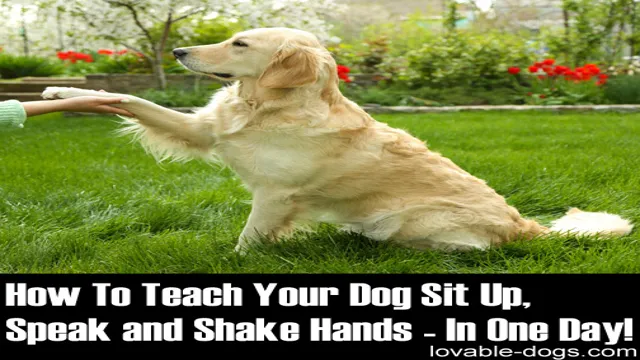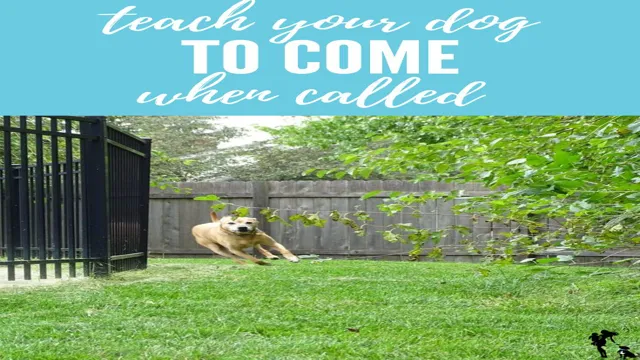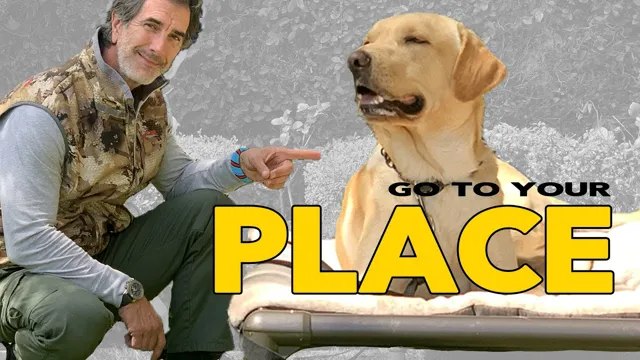Teaching Your Dog Not to Jump on Other Dogs: Tips for Dog Owners
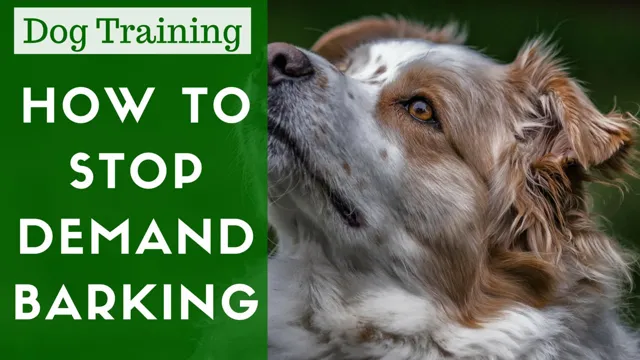
Does your dog seem to jump on other dogs when you take them for a walk? If so, you are not alone! Many dogs have a tendency to jump up on other dogs when they meet them, which can be both embarrassing and dangerous. Fortunately, there are ways to train your dog not to jump on other dogs. With some patience and consistency, you can teach your pup to stay calm and respectful when meeting other dogs. In this blog, we will show you how to train your dog not to jump on other dogs and help keep your pup and their four-legged friends safe.
Why is it Important to Train Your Dog Not to Jump?
Training your dog not to jump is an important part of any responsible pet ownership. When a dog jumps on someone, it can cause physical injury and create a negative impression of the dog. Teaching your pup not to jump can help them become a polite, well-mannered dog. Jumping can also be dangerous when a dog jumps on other dogs. It’s important to teach your pup to be calm and well-behaved around other animals.
If your dog jumps on other dogs, it could lead to a fight, which can result in injury or even death in some cases. That’s why it’s so important to train your dog not to jump. It’s not just about avoiding physical injury; it’s also about keeping your pup from developing bad habits which could lead to dangerous situations. Here are a few tips for teaching your pup not to jump on other dogs. First, start by teaching your pup the “sit” command.
This is a simple way to keep them from jumping on other dogs. Whenever you see your pup about to jump on another dog, tell them to “sit.” This will help them learn that jumping is not appropriate behavior. You should also reward your pup when they display good behavior. For example, if your pup doesn’t jump on another dog, give them a treat or a pat on the head.
This will reinforce the idea that good behavior is rewarded and that jumping is not acceptable. Finally, be consistent with your training. Don’t reward your pup for jumping one day and then scold them the next. This will only confuse your pup and make it harder for them to learn. Be consistent with your training and always reward your pup for good behavior.
By following these tips, you can help your pup learn that jumping on other dogs is not acceptable behavior. Training your pup not to jump will help
The Risks of Allowing Your Dog to Jump
Many dog owners are unaware of the risks associated with allowing their pup to jump on other dogs. Not only can it create an uncomfortable situation for both dogs, but it can also cause potential harm. To prevent this from happening, it is important to teach your dog not to jump on other dogs. Establishing boundaries, providing positive reinforcement, and creating an environment of respect are all key elements to helping your dog learn this important lesson. Additionally, ensuring that your pup is properly socialized will help them understand how to interact with other dogs appropriately.
With a little patience and consistency, you can help your pup become a courteous canine companion.
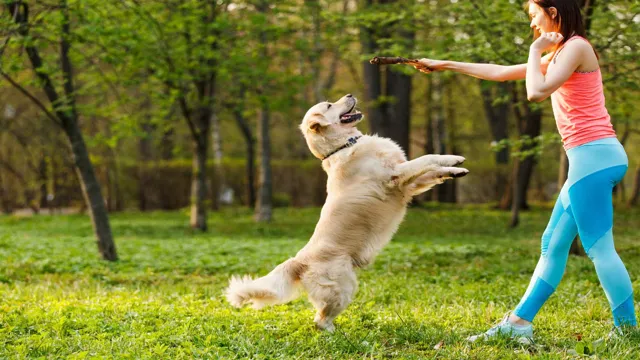
The Benefits of Training Your Dog Not to Jump
Training your dog not to jump is not only a great way to keep them from annoying other animals and people, but it can also be beneficial for their overall wellbeing. Teaching your pup to be well-behaved around other animals and people can reduce their stress levels and help them to become better socialized. Additionally, it can also help to reduce the risk of injury from excitedly jumping on other animals and people. By reinforcing positive behaviors such as sitting or laying down in the presence of other dogs and people, you can help to ensure that your pup is a well-mannered member of your family and the community.
Steps to Training Your Dog Not to Jump
Training your dog not to jump on other dogs can seem like an impossible task. It can be frustrating, especially when your dog is so excited to meet other dogs that they just can’t help themselves. However, with a bit of patience and consistency, it is possible to teach your dog not to jump on other dogs. The first step to training your dog not to jump on other dogs is to establish a clear and consistent set of rules for your dog. Make sure your dog knows exactly what is expected of them and that there are consequences for not following the rules.
This could include verbal commands like “sit” or “stay,” or it could be a physical cue like tapping your dog on the shoulder or putting your hand up in a stop signal. Next, you’ll need to practice with your dog in a safe environment. Find an area with no other dogs and have your dog on a leash. Then, call your dog’s name and give them a command like “sit” or “stay.” If your dog follows the command, reward them with a treat or praise.
If they don’t, you can use the physical cue or verbal command to redirect their attention. Once your dog is responding well to commands in a safe environment, you can begin to introduce other dogs. Start by having your dog on a leash, and keep them at a distance from the other dog. If your dog begins to jump, use the physical cue or verbal command to stop them. If your dog is successful, reward them with a treat or verbal praise.
With patience and consistency, you can teach your dog not to jump on other dogs. Remember to always be positive and consistent with your commands, and to reward your dog for good behavior. With practice, your dog will learn the rules and be more comfortable around other dogs.
Introduce Your Dog to Walking on a Leash
Introducing your dog to walking on a leash can be a daunting task, but it doesn’t have to be! Teaching your pup how to walk on a leash is an important part of owning a dog and it can help them learn how to not jump on other dogs. The key to successful leash training is consistency and patience. Start by getting a quality leash and collar and then introduce your pup to the leash and collar in a positive way. Allow them to explore and get comfortable with the leash and collar before attempting to walk them. When you’re finally ready to start walking, keep the leash loose and keep your pup close to you.
If they start to jump on other dogs, use a cue word such as ‘no’ or ‘stop’ to correct the behavior. With consistent training, your pup will learn how to walk on a leash and not jump on other dogs.
Learn How to Read Your Dog’s Body Language
Are you looking for ways to teach your pup not to jump on other dogs? Learning to read your dog’s body language is a great way to help them understand how to better interact with other pups. By understanding what your dog is trying to communicate to you, you can help them learn how to be more respectful and mindful of other dogs, and help them to enjoy socializing in a safe and enjoyable way. From their posture to their tail wagging, understanding the subtle nuances of your pup’s body language can help you show them what kind of behavior is expected and help them understand when they should back off.
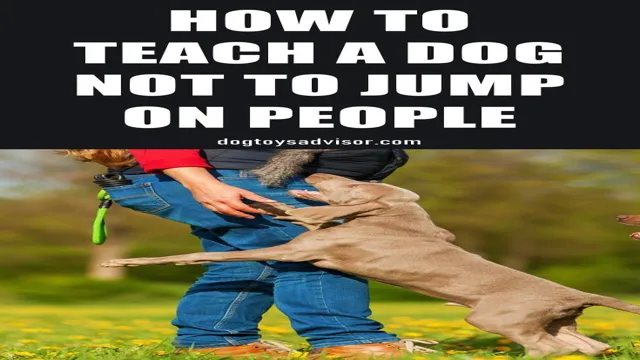
Teach Your Dog ‘Sit’ and ‘Stay’ Commands
Teaching your dog the commands ‘sit’ and ‘stay’ are fundamental skills that every pup should master. Learning how to train your pup not to jump on other dogs is also an important lesson. This can be a tricky task, as dogs can naturally be excited to meet new canine friends! However, with careful training and a little patience, you can teach your pup to interact with other dogs politely. Start by teaching your dog to sit and stay on command, and then practice with a calm, friendly dog. Reward your pup with treats and praise for good behavior, and make sure to consistently enforce the rules.
With enough practice, you can help your pup learn how to properly interact with other dogs.
Tips for Avoiding Unwanted Jumping
Teaching your dog not to jump on other dogs is an important part of responsible pet ownership. Jumping on other dogs can create an uncomfortable situation, and it can even lead to fights or injuries. Fortunately, there are some simple tips you can follow to help your pup learn to stay calm and polite around other dogs. The first step is to make sure that your dog is properly socialized. This means introducing them to other dogs in a safe and controlled environment, so that they can become comfortable with the presence of other canines.
If your dog is hesitant around other dogs, take your time and let them get used to their new friends at their own pace.
Once your pup is comfortable around other dogs, it’s time to start teaching them boundaries. A great way to do this is to teach your dog the “leave it” command. This is a useful command that helps to keep your pup from jumping on other dogs by teaching them to ignore distractions. It’s also important to reward your pup for good behavior.Whenever your pup stays calm and polite around other dogs, be sure to give them plenty of praise and treats. This will help reinforce the desired behavior and help your pup understand what is expected of them. Finally, don’t forget to set up some clear boundaries for your pup. Keep them on a leash when around other dogs and make sure they understand that jumping is not allowed. If your pup does jump, calmly redirect their attention and reward them for behaving properly.
By following these tips, you can help ensure that your pup has the best possible experience when interacting with other dogs. Teaching your dog to stay calm and polite around other dogs will make them a more pleasant pet, and it will also help ensure that everyone remains safe and comfortable.
Keep Training Sessions Short and Fun
If you want to teach your dog not to jump on other dogs, then the key is to keep training sessions short and fun. With a short and enjoyable training session, your dog will be motivated to learn without feeling overwhelmed or exhausted. When you keep the sessions brief, you can reward your pup for good behavior and address any misbehaviors quickly and effectively. Additionally, adding fun activities into the training can help to keep your pup engaged and excited to learn. With a little bit of patience and consistency, you and your pup will be able to successfully learn how to make introductions without jumping.
Reward Good Behavior Immediately
If you want to teach your pup not to jump on other dogs, the key is to reward them for good behavior immediately. This helps to reinforce the desired behavior and also helps them to remember what is expected of them. Every time your pup refrains from jumping, be sure to give them a treat or a pat on the head. Doing this will help your pup to understand that not jumping is a good thing and that it will be rewarded. Additionally, it’s important to be consistent with your rewards so that your pup can better understand the boundaries and not be confused.
With time and patience, your pup will learn and you can enjoy more peaceful walks with your pup.
Conclusion
Teaching your pup proper social etiquette is key to having a well-behaved pup. With patience and consistent training, your pup will be able to control their impulses and learn not to jump on other dogs. Your pup will thank you and your fellow canine friends will be grateful!”
FAQs
How can I teach my dog not to jump on other dogs?
Training your dog not to jump on other dogs involves teaching them to respond to the cue ‘off’ or ‘down’, praising them for not jumping, and rewarding them for their good behavior. Additionally, you can work on redirecting their attention away from other dogs and providing them with an alternate behavior to perform.

